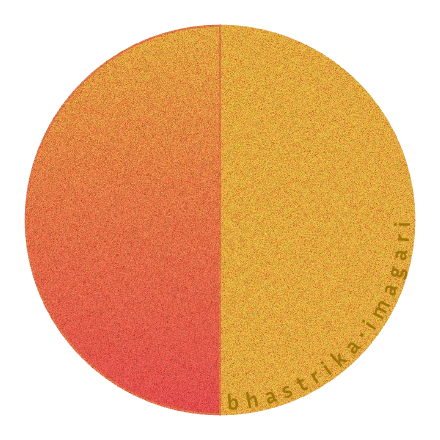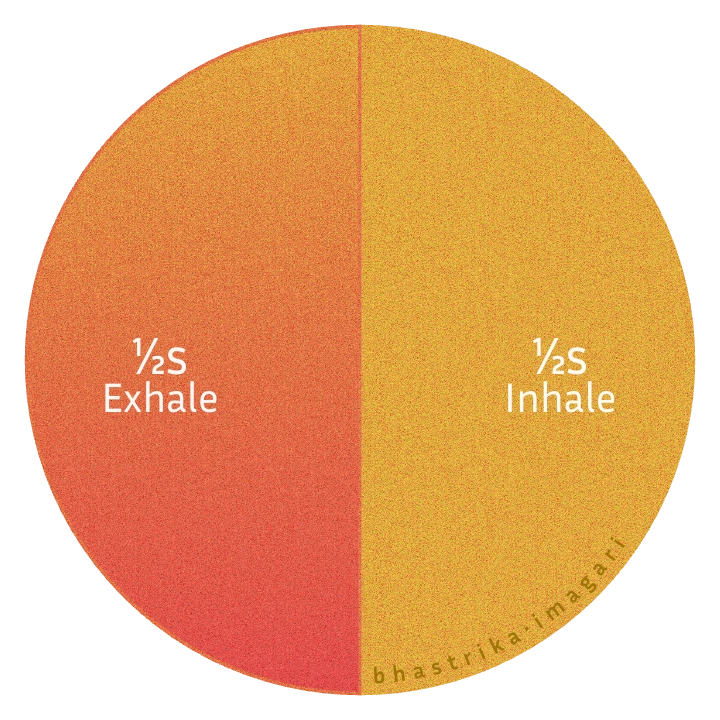Bhastrika

Overview
Section titled “Overview”Bhastrika, or Bellows Breath, is a powerful pranayama technique designed to ignite inner fire and stimulate the body’s energy systems. It involves a series of forceful inhales and exhales, using the diaphragm and abdominal muscles to pump air in and out of the lungs in rapid succession.
Where Kapalabhati focuses on passive inhales and forceful exhales, Bhastrika is forceful in both directions—making it more intense, more stimulating, and deeply purifying. It’s often used to break mental dullness, raise body heat, and prepare for meditation or vigorous yoga.
| Phase-by-phase | Time | How |
|---|---|---|
| Inhale | ¼ - ½s | Forcefully through the nose, expanding the belly |
| Exhale | ¼ - ½s | forcefully through the nose, contracting the belly |
Continue at a steady rhythm of 1–2 breaths per second
Practice in rounds of 10–20 breaths, followed by rest and deep breathing
The breath should be even in force and speed, both in and out, like the bellows of a blacksmith’s forge.
Effects & Benefits
Section titled “Effects & Benefits”- Increases oxygen supply and awakens energy throughout the body
- Enhances mental clarity and removes sluggishness
- Raises internal heat—warming and invigorating
- Clears the respiratory passages and detoxifies the lungs
- Stimulates the nervous system and metabolism
- Builds resilience and inner strength
This is a bold, fiery breath—not for winding down, but for powering up.
Getting Started
Section titled “Getting Started”Sit tall in a comfortable, alert position. Keep the face, jaw, and shoulders relaxed—all the movement comes from the belly. Take a full inhale and exhale to begin.
- -Inhale ½sforcefully and deeply through the nose expanding your belly
- -Exhale ½sforcefully and completely through the nose contracting your belly
- -Repeat10–20 breaths at a consistent rhythm

imagari.me/bhastrika
After the final exhale, inhale deeply, hold for a few seconds, then release slowly. Rest for 30–60 seconds before the next round. Start with 1–2 rounds, and build as your stamina improves.
When to Use
Section titled “When to Use”- In the morning to energize body and mind
- Before yoga or a demanding task to activate focus
- During times of mental fog, fatigue, or heaviness
- As a reset when feeling uninspired or emotionally dull
- To increase heat in cold climates or low-energy states
Always practice on an empty stomach, and stop if you feel dizzy, lightheaded, or overstimulated.
This breath is best balanced with calming techniques afterward, like Nadi Shodhana or Coherent Breathing.